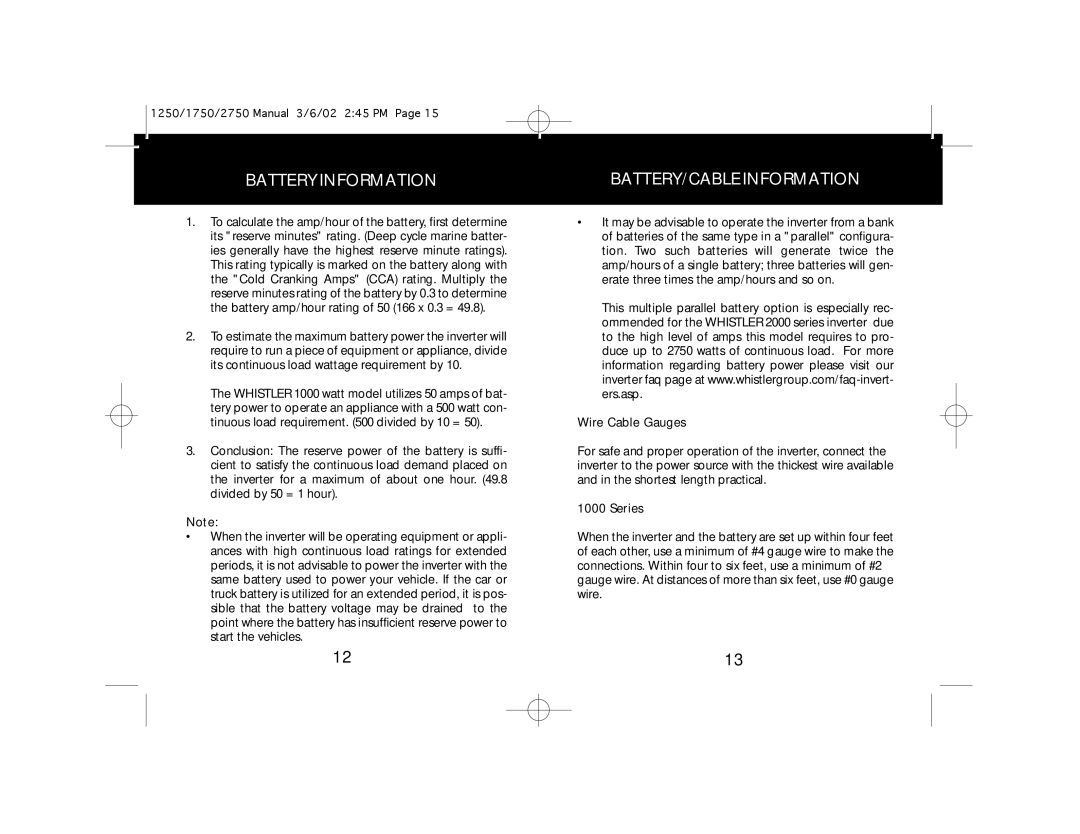2000, 1000 specifications
Whistler 1000 and Whistler 2000 are advanced radar detectors designed for high-performance performance in detecting police radar and laser systems. These models are praised for their sophisticated technology, offering drivers the confidence needed to avoid speeding tickets and enhance road safety.The Whistler 1000 features a dual antenna system, which allows for increased sensitivity and range in detecting radar signals. This model is engineered to provide 360-degree detection, ensuring that no radar signal goes unnoticed, regardless of the direction from which it approaches. Advanced digital signal processing enhances the ability to filter out false alerts, focusing only on relevant signals, and creating a much quieter detection experience for the user.
One of the standout characteristics of the Whistler 1000 is its ability to detect multiple radar bands, including X, K, Ka, and even Laser signals. This wide range of detection is essential as it makes the device versatile enough to handle various law enforcement radar technologies. Additionally, the device features a built-in voice alert system, which gives users real-time notifications about radar detections without the need to take their eyes off the road.
Similarly, the Whistler 2000 builds on this foundation, offering even more advanced features. It includes GPS functionality for added precision in location-based alerts. This allows the device to remember locations of false alerts and minimize inconvenience in frequently traveled areas. Complete with an OLED display, the Whistler 2000 provides clear visual indicators alongside audible alerts.
Both models are equipped with City/Highway modes, allowing drivers to adjust the sensitivity of the detection based on urban or highway driving conditions. This adaptability is particularly valuable in reducing the number of false alarms commonly experienced in city driving.
Moreover, both the Whistler 1000 and 2000 are designed for ease of installation, featuring a windshield mount for secure and unobtrusive attachment. Their compact designs ensure that they blend seamlessly with a vehicle’s interior.
In summary, the Whistler 1000 and Whistler 2000 radar detectors are distinguished by their extensive detection capabilities, intelligent filtering technologies, and thoughtful user features. Together, they represent the cutting edge of radar detection technology, providing users with powerful tools for safer driving.

